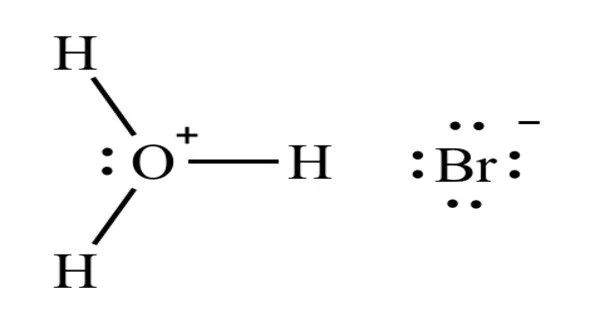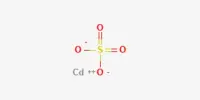Hydrobromic acid is a strong acid formed by dissolving the diatomic molecule hydrogen bromide (HBr) in water. “Constant boiling” hydrobromic acid is an aqueous solution that distills at 124.3 °C (255.7 °F) and contains 47.6% HBr by mass, or 8.77 mol/L. It is used as a chemical intermediate, but its primary application is as a sanitizing or disinfecting agent.
Hydrobromic acid has a pKa of 9, making it a stronger acid than hydrochloric acid but not as strong as hydroiodic acid. Hydrobromic acid is one of the most powerful mineral acids known. It is used as a reagent and a catalyst in a variety of organic reactions.
Properties
Hydrogen bromide is a colorless, suffocating gas, very soluble in water and highly dissociated in aqueous solution. It readily fumes in the presence of moist air. Hydrogen bromide gas are highly corrosive substances that can cause severe burns upon contact.
- Chemical formula: HBr(aq)
- Molar mass: 80.91 g·mol−1
- Appearance: colorless/faint yellow liquid
- Odor: acrid
- Density: 1.49 g/cm3 (48% w/w aq.)
- Melting point: −11 °C (12 °F; 262 K) (47–49% w/w aq.)
- Boiling point: 122 °C (252 °F; 395 K) at 700 mmHg (47–49% w/w aq.)
- Solubility in water: 221 g/100 mL (0 °C); 130 g/100 mL (100 °C)
Synthesis
Hydrobromic acid can be prepared in the laboratory via the reaction of Br2, SO2, and water.
Br2 + SO2 + 2 H2O → H2SO4 + 2 HBr
The production of anhydrous HBr, which is then dissolved in water, is more commonly used in laboratory preparations.
Hydrobromic acid is commonly produced in industry by reacting bromine with sulfur or phosphorus and water. It can, however, be produced electrolytically. It can also be made by combining bromides with non-oxidizing acids such as phosphoric or acetic acid.
Alternatively, dilute (5.8M) sulfuric acid and potassium bromide can be used to make the acid:
H2SO4 + KBr → KHSO4 + HBr
Using more concentrated sulfuric acid or allowing the reaction solution to exceed 75 °C further oxidizes HBr to bromine gas. The acid is further purified by filtering out the KHSO4 and by distilling off the water until the solution reaches an azeotrope (≈ 126 °C at 760 torr). The yield is approximately 85%.
Hydrobromic acid is available commercially in various concentrations and purities.
Uses
Hydrobromic acid is primarily used in the production of inorganic bromides, particularly zinc, calcium, and sodium bromides. It is an effective reagent for the synthesis of organobromine compounds. HBr can cleave certain ethers.
It also serves as a catalyst for alkylation reactions and the extraction of certain ores. Hydrobromic acid is used to make industrially important organic compounds such as allyl bromide, tetrabromobis(phenol), and bromoacetic acid.
HBr is almost exclusively involved in the anti-Markovnikov hydrohalogenation of alkenes. The resulting 1-bromoalkanes are versatile alkylating agents capable of producing fatty amines and quaternary ammonium salts.












